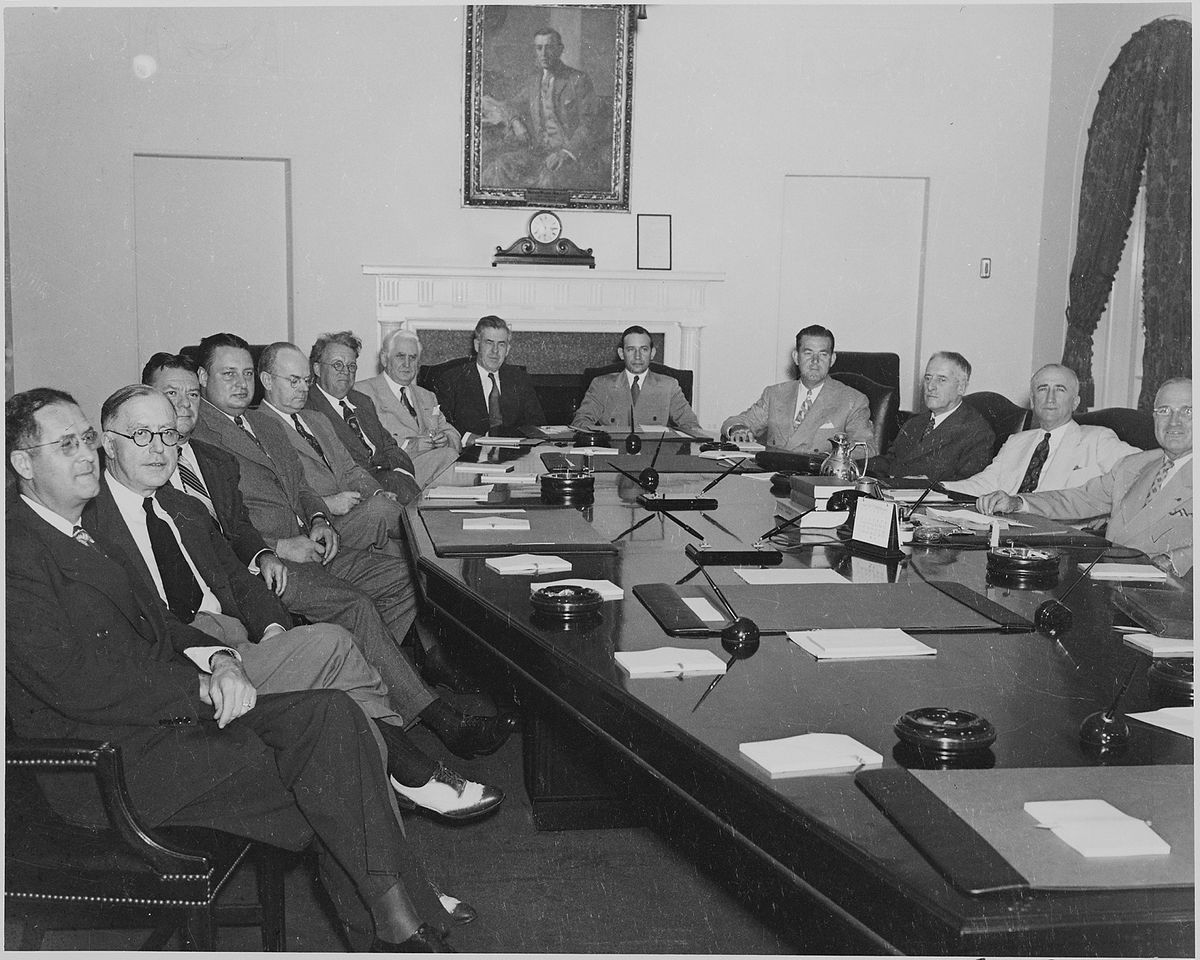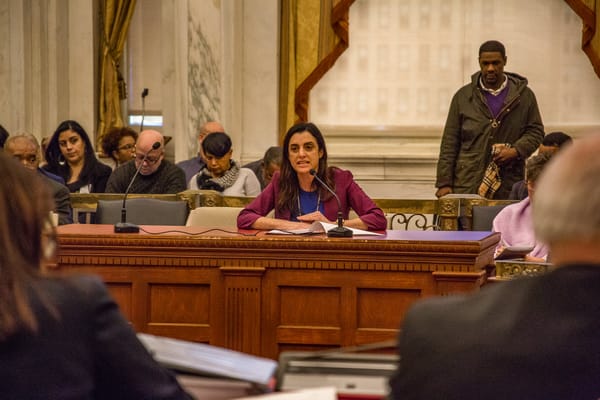Economic Cooperation in Furtherance of Peace: Lessons from the Postwar Era

During and after World War II the architects of the economic institutions of the liberal international order articulated a compelling rationale for the structure and rules of the International Monetary Fund (IMF) and General Agreement on Tariffs and Trade (GATT). In a recent article I identified a common set of principles, based on an exhaustive review of contemporaneous speeches, essays and Congressional testimony, that guided efforts to establish these institutions. These principles represented a pragmatic, battle-tested evolution of a more abstract vision associated with several major Enlightenment thinkers, including the pacifying effects of international commerce and the prospects for a rules-based federation of nations. In brief, the principles are as follows: multilateral coordination, liberalization, mutual benefit with mutual responsibility, and linking economy to security. Together these concepts motivated and underpinned negotiations over how to govern international commerce in furtherance of peace in the postwar world.
That article was part of an effort to develop—and share—a richer understanding of the historical motivation for economic cooperation in the postwar era that might otherwise be lost to distance. That said, I was not attempting to defend the behavior of the IMF or GATT (or its more recent incarnation as the World Trade Organization) or other institutions of the liberal international order in the decades since their creation. What I would like to do instead, is to situate these institutions and the principles behind them within the liberal tradition and to review what those principles were and how they arose from their historical moment. My hope is that if we are better positioned to understand their historical charge, it might provide us with better tools for assessing just what parts of that legacy are worth preserving or reforming. Was there something that the creators of the IMF and GATT learned about why international cooperation was essential, and what could help it succeed, that we have since forgotten? Would we evaluate these institutions differently today if we could recover that distant rationale?
An enlightenment lineage
The importance of international commerce and its potential for nefarious or virtuous influence on relations among states has a long history. In the second half of the 18th century several important concepts and theories were articulated that have particular relevance for thinking about international economic cooperation after World War II. A foundational argument expressed by a range of Enlightenment thinkers was that foreign countries, foreign businesses and foreign individuals were potential commercial partners and suppliers, not merely customers. Against the mercantilism of European monarchies and commercial incumbents, these were arguments for mutual gain and cooperation, most prominently by Adam Smith in the Wealth of Nations. As Smith simply put it, “[i]f a foreign country can supply us with a commodity cheaper than we ourselves can make it, better buy it of them.”
But partnership with foreigners also had important consequences unrelated to private economic gain. Like cooperation among co-nationalists, cooperation across national borders would encourage peace between nations through interdependence, improved understanding and perhaps even a recognition of common humanity. The Baron de Montesquieu, for example, argued that, “[c]ommerce is a cure for the most destructive prejudices.” Thomas Paine similarly declared that commerce “is a pacific system, operating to cordialise mankind, by rendering nations, as well as individuals, useful to each other.” Immanuel Kant agreed: “The spirit of commerce, which is incompatible with war, sooner or later gains the upper hand in every state.” Moreover, Kant viewed a global, pacific federation of republican states—creating rules for international conduct among states in order to secure freedom for those states—to be both a moral duty and a practical inevitability.
Future diplomats and international negotiators would feel this same duty but did not take peaceful outcomes for granted. Unlike Kant’s assertions about conditions that would “guarantee” peace, Smith recognized that trade entailed no such guarantees: “Commerce, which ought naturally to be, among nations, as among individuals, a bond of union and friendship, has become the most fertile source of discord and animosity.” Only diligent attention to practical details, guided by a set of essential principles, and supported by compelling argument, would have a chance of promoting peaceful commercial and political relations.
The architects of the liberal international order were well aware of these divergent possibilities and keen to design institutions that could tilt outcomes toward peaceful commerce and away from the myopic pursuit of national advantage through trade. In describing the State Department’s approach to international economic negotiations in 1944, Dean Acheson (Assistant Secretary of State, 1941–1945, Under Secretary of State, 1945–1949, Secretary of State 1946–1953), succinctly captured US interests, “[o]ur own self-interest dictates that we should collaborate with other countries in this endeavor.”
Interwar economic anarchy
Second only to the scourge of war itself, foremost among the motivations for cooperation was first hand experience with the collapse of national economic activity and international economic cooperation during the interwar years. That is, two key events dominated these years: the Great Depression and escalating trade wars. The first decimated the major world economies, leading to material hardship for huge swaths of their populations, economic and political desperation and prompting increasingly inward-looking politics. The second exacerbated—though was not a material factor in causing—economic stagnation. In the United States in particular a boom in farm lending, a stock market bubble, and egregious monetary policy mistakes paved the way for a wave of bank failures, deflation, and the Great Depression.
The Hawley-Smoot Tariff Act, passed in June 1930, led to large increases in tariff rates across notable proportion of US imports. This reduced the exports of US trade partners and led to retaliatory trade policy measures abroad in relatively short order. Economic nationalism increased the appeal of protectionism while retaliation further reduced commercial interdependence and reinforced perceptions of international economic policy as proxy warfare. This led to a vicious cycle of protectionist tariffs, draconian currency practices and retaliatory measures. In sum, depression and trade wars had dealt a massive blow to every major national economy, reinforcing economic and political nationalism and creating fertile conditions for fascism and war.
The architects of the postwar order saw these events as directly related to the bloodshed of World War II. New and corrosive political movements arose out of this economic hardship and fanned the flames of ethno-nationalism. A new liberal order would need to recognize their root causes and put in place a framework that could facilitate international cooperation while constructively addressing critical domestic needs. There would need to be a balance between international anarchy and international uniformity. This balance would be guided by a set of principles that would not pre-ordain a specific structure but would effectively bound the set of institutional structures that would have any likelihood of addressing these fundamental tensions.
Principles from the postwar negotiations
In developing a better understanding of how American officials described their efforts to resolve these tensions I found two key insights as surprising as they were impressive. First, negotiators recognized that full employment policies would be critical to ensuring support for continued global engagement and that economic institutions would need to provide member nations with the flexibility to pursue full employment. William Clayton (Assistant Secretary of State, 1944–1946, Under Secretary of State, 1946–1947), for example, wrote that, “[t]he attainment of approximately full employment by the major industrial and trading nations, and its maintenance on a reasonably assured basis, are essential to the expansion of international trade on which the full prosperity of these and other nations depends.”
Second, American officials did not offer simplistic and one-sided mercantilist arguments for international trade. Clayton, for example, explained that, “a nation profits because it secures better or cheaper goods abroad than at home.” President Roosevelt offered a nuanced argument for the benefits of imports in a posthumous letter to Congress in support of the Reciprocal Trade Agreements Act (RTAA), which would provide the legislative authority for the negotiation and ratification of GATT, “[i]t is also important to remember that imports mean much more than goods for ultimate consumers. They mean jobs and income at every stage of the processing and distribution channels through which the imports flow to the consumer.” Officials offered these and a range of other arguments in order to persuade their peers in Congress and in foreign capitals. I expand on and offer some supporting context below for each of the principles that guided these efforts.
Multilateral coordination. American officials concluded that international economic policies can and should be changed to meet changing circumstances and domestic needs, but those policies and changes should be coordinated with multilateral partners.
American officials firmly believed that alternatives to multilateral policy coordination were inferior, including unilateral policy changes, bilateral agreements, and regional economic blocs. The dramatic rise in protectionism and competitive devaluation had been initiated by a series of unilateral maneuvers (including unilateral actions by the United States), greatly tarnishing unilateralism in the minds of American officials. Furthermore, despite earlier success with bilateral trade deals over the previous decade, American officials now believed that this approach was too timid, too piecemeal and too geographically narrow to be successful in the post-war world. Clayton, for example, was similarly wary of regionalism, “[t]here is the way of economic blocs, in which a group of nations which cannot solve their problems by letting the rest of the world in, try to solve them by shutting the rest of the world out … [It] tend[s] in the long run to contract and restrict rather than expand international trade … [and is] contrary to our deepest convictions about the kind of economic order which is most conducive to the preservation of peace.”
Henry Morgenthau (Secretary of Treasury, 1934–1945), in an essay in Foreign Affairs, also cautioned against creating an exclusive economic club, “there would seem to be considerable danger—political as well as economic—in setting up a world divided into two blocs. Such a division of the world would not only deprive us of the general advantages of multilateral trade but would inevitably lead to conflict between the two groups. The fact is that the problems considered at Bretton Woods are international problems, common to all countries, that can be dealt with only through broad international cooperation.
Liberalization. American officials believed that policy should reduce domestic and international barriers to trade and that exchange rate policy should make all currencies freely tradeable (convertible).
A transparent and predictable set of rules engendered by multilateral coordination would be best put to use to reduce the severe interwar barriers to international trade in goods and, to facilitate payments and investment, in currencies. While the architects of economic reform after World War II were not laissez-faire capitalists they saw both material and foreign policy gains from relatively free exchange.
In arguing for the RTAA in 1943, for example, Hull shared his conclusions about the need for liberalization, “[i]t was clear to us that satisfactory economic recovery was impossible without a restoration and expansion of healthy foreign trade … through a reduction, here and abroad, of unreasonable and excessive trade barriers.” Similarly, in 1944, Acheson described the goals of multilateral trade negotiations simply, “[w]e seek … with as many nations as possible … the effective and substantial reduction of all kinds of barriers to trade.”
More open trade in goods was only one form of liberalization—free trade in currencies would also be necessary to restore global commerce. Acheson made the case to Congress in 1944 for the crucial role of currency convertibility in international commerce, “[f]oreign investment and financial transactions … require … the assurance that interest and principal can be converted into the lender’s own currency … Exporters are not inclined to export unless there is reasonable assurance that they will get paid in money … which can be readily transferred into their own currency.”
Economy = Security. The link between the economy and security had two important components for American officials, (1) robust economies are essential to national and international security, and security is essential to economic stability and growth, and (2) international cooperation in the economic and financial arena was essential to, and must proceed in parallel with, international cooperation in the political and security arena.
The latter arena being associated in particular with the United Nations, or as Morgenthau put it at length in Foreign Affairs, “[i]nternational monetary and financial cooperation is indispensable for the maintenance of economic stability; and economic stability, in turn, is indispensable to the maintenance of political stability. Therefore, a program for international economic cooperation of which Bretton Woods is the first step must accompany the program for political and military security toward which the United Nations are moving. Bretton Woods is the model in the economic sphere of what Dumbarton Oaks is in the political. They reinforce and supplement each other. Political and economic security from aggression are indivisible, and a sound program for peace must achieve both.”
In 1943 Hull described the relationship, and virtuous cycle, between peace and economic security, “it was also clear from the beginning that a revival of world trade was an essential element in the maintenance of world peace … without prosperous trade among nations any foundation for enduring peace becomes precarious and is ultimately destroyed …. The political and social instability caused by economic distress is a fertile breeding ground of agitators and dictators, ready to plunge the peoples over whom they seize control into adventure and war.”
Mutual benefit-Mutual responsibility. American officials believed that international commerce was mutually beneficial—positive-sum, not zero-sum—and that national economies were deeply interdependent. However, harnessing those benefits came with important responsibilities.
Officials articulated those mutual benefits in a number of ways, including both straightforward benefits associated with exports, and more subtle benefits associated with cheaper imports and income earned by US trade partners. Hull testified in 1943, for example, that international commerce should be expanded through “mutually beneficial trade agreements.”
Mutual benefits and interdependence, however, were not sufficient to sustain international cooperation. A mutual view of responsibility was also required. Key responsibilities included reciprocity in the reduction of trade barriers and maintaining full domestic employment, as I noted above, to boost demand for imports and ensure continued political support open trade.
Nations could join and benefit from a liberal, multilateral trading system only if their own economies reciprocally opened to exports from trade partners. This was the core rationale for the RTAA and postwar negotiations. In Hull’s words, the United States would “grant to foreign countries reductions in our tariff rates in exchange for benefits to our trade by other countries.”
Enduring ideas?
Effective institutions can facilitate cooperation, both domestically and internationally. The architects of the economic institutions of the liberal international order harnessed painful experience and keen insight to carry out their institutional vision. The principles associated with that vision, as I have characterized them—multilateral coordination, liberalization, mutual benefit-mutual responsibility, and economy = security—might yet have some relevance for contemporary debates. Multilateral coordination to ensure inclusive ownership of international policy decisions and predictable rules for international commerce; liberalization to ensure that the substantial material benefits of global commerce are realized and used to strengthen connections among nations; mutual benefit-mutual responsibility to ensure that the reciprocal gains from trade are recognized while at the same time obligations to international partners and domestic constituencies are honored; and economy = security to ensure that security partnerships are made more credible and durable through partnerships that also bind economies and citizens closer together.
The ethos of the liberal international order represented genuine progress over the destructive anarchy of trade war and military conflict, and the pernicious ideologies that gave rise to them. American leaders and their allies envisioned an alternative based on interdependence, mutual responsibility and shared security and prosperity. Secretary of State Cordell Hull seemed to appreciate the tenuous nature of peace and the fragility of post-war economic wisdom. The continuation of peaceful and productive international relations would require commitment and vigilance. He ably expressed that sentiment in his letter to the Nobel Committee upon receiving the Nobel Peace Prize in 1945, mostly for his work related to the founding of the United Nations, in this way, “[t]he crucial test for men and for nations today is whether or not they have suffered enough, and have learned enough, to put aside suspicion, prejudice and short-run and narrowly conceived interests and to unite in furtherance of their greatest common interest.”
Featured image is Photograph of Cabinet meeting at the White House, by Abbie Rowe




